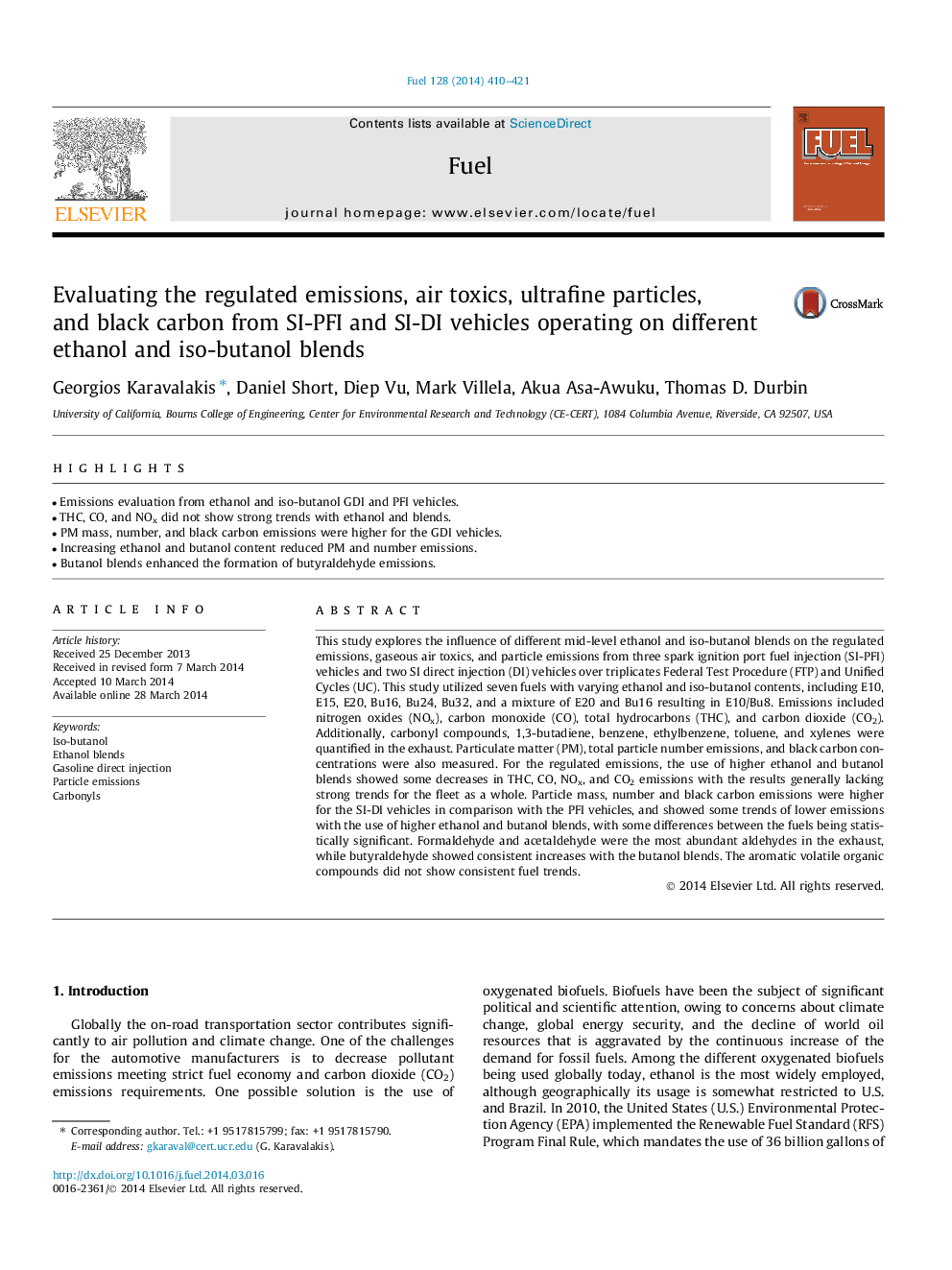| کد مقاله | کد نشریه | سال انتشار | مقاله انگلیسی | نسخه تمام متن |
|---|---|---|---|---|
| 6637662 | 461154 | 2014 | 12 صفحه PDF | دانلود رایگان |
عنوان انگلیسی مقاله ISI
Evaluating the regulated emissions, air toxics, ultrafine particles, and black carbon from SI-PFI and SI-DI vehicles operating on different ethanol and iso-butanol blends
دانلود مقاله + سفارش ترجمه
دانلود مقاله ISI انگلیسی
رایگان برای ایرانیان
کلمات کلیدی
موضوعات مرتبط
مهندسی و علوم پایه
مهندسی شیمی
مهندسی شیمی (عمومی)
پیش نمایش صفحه اول مقاله

چکیده انگلیسی
This study explores the influence of different mid-level ethanol and iso-butanol blends on the regulated emissions, gaseous air toxics, and particle emissions from three spark ignition port fuel injection (SI-PFI) vehicles and two SI direct injection (DI) vehicles over triplicates Federal Test Procedure (FTP) and Unified Cycles (UC). This study utilized seven fuels with varying ethanol and iso-butanol contents, including E10, E15, E20, Bu16, Bu24, Bu32, and a mixture of E20 and Bu16 resulting in E10/Bu8. Emissions included nitrogen oxides (NOx), carbon monoxide (CO), total hydrocarbons (THC), and carbon dioxide (CO2). Additionally, carbonyl compounds, 1,3-butadiene, benzene, ethylbenzene, toluene, and xylenes were quantified in the exhaust. Particulate matter (PM), total particle number emissions, and black carbon concentrations were also measured. For the regulated emissions, the use of higher ethanol and butanol blends showed some decreases in THC, CO, NOx, and CO2 emissions with the results generally lacking strong trends for the fleet as a whole. Particle mass, number and black carbon emissions were higher for the SI-DI vehicles in comparison with the PFI vehicles, and showed some trends of lower emissions with the use of higher ethanol and butanol blends, with some differences between the fuels being statistically significant. Formaldehyde and acetaldehyde were the most abundant aldehydes in the exhaust, while butyraldehyde showed consistent increases with the butanol blends. The aromatic volatile organic compounds did not show consistent fuel trends.
ناشر
Database: Elsevier - ScienceDirect (ساینس دایرکت)
Journal: Fuel - Volume 128, 15 July 2014, Pages 410-421
Journal: Fuel - Volume 128, 15 July 2014, Pages 410-421
نویسندگان
Georgios Karavalakis, Daniel Short, Diep Vu, Mark Villela, Akua Asa-Awuku, Thomas D. Durbin,